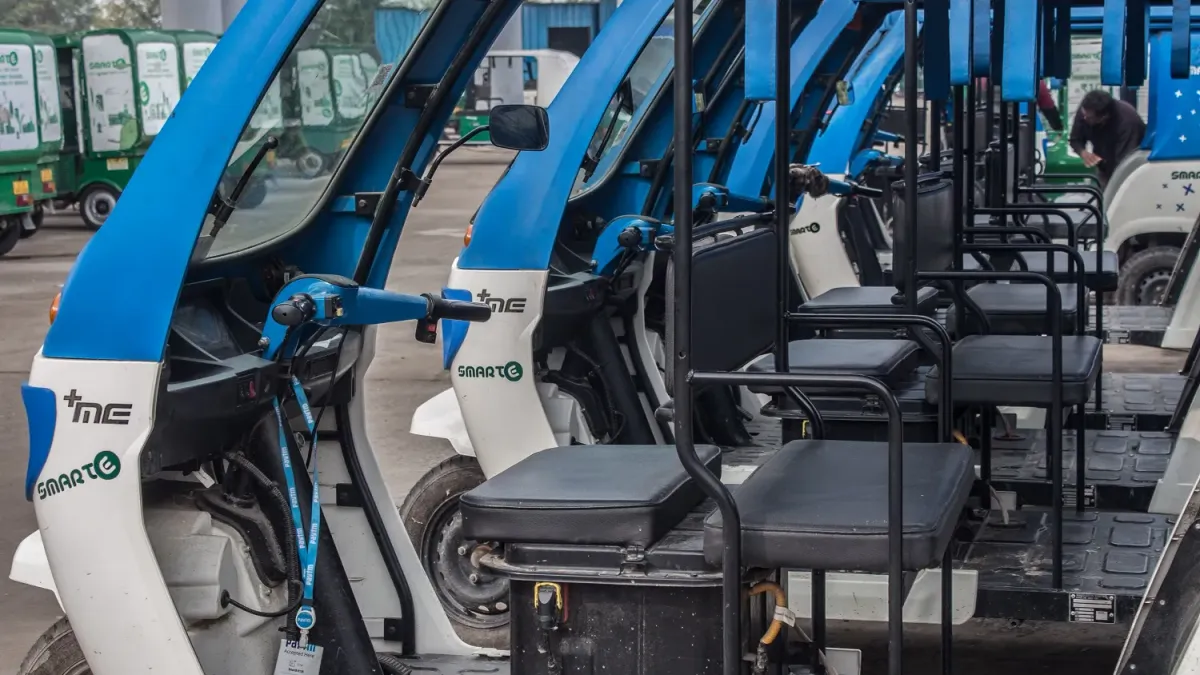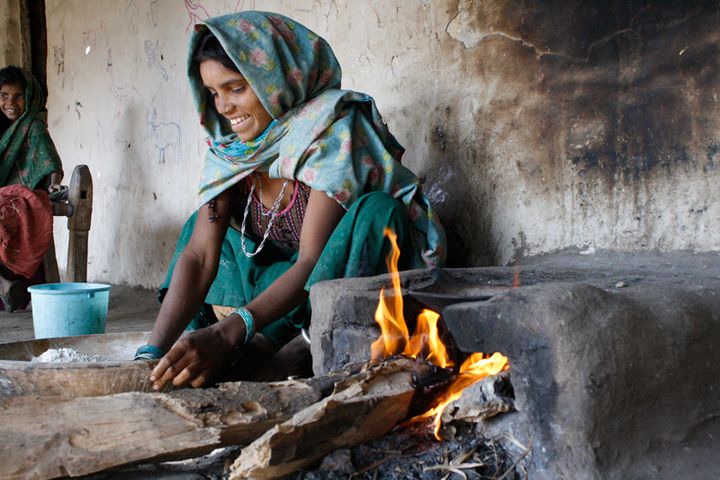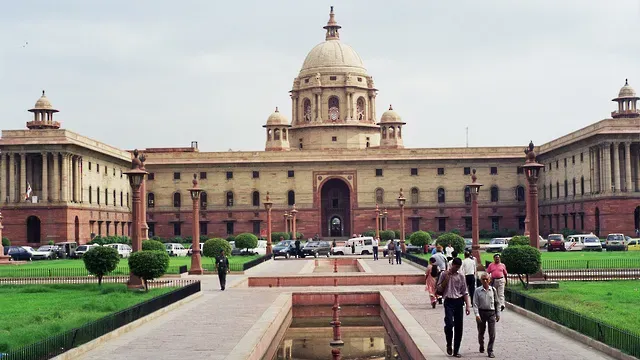Can mini grids help green electric mobility in India?
Cooperatives proved successful in localising energy production in Europe: India can replicate the same model, argues Sunitha Anup

Welcome to today’s edition of Lights On, a newsletter that brings you the key stories and exclusive intel on energy and climate change in South Asia.
A reminder that the easiest -and free - way you can support this newsletter's growth is by sharing it with your colleagues and inviting them to subscribe. You can share a link using the button below or forward this email directly. It takes a minute but it makes a big difference.
By Sunitha Anup
Electric vehicles may be key to linking the renewable power and low-carbon transport sectors, a step that would have benefits for everyone. Today, too few electric vehicles are powered by renewable energy. Changing this is a task that large vehicle markets are already focussing on in Europe - requiring a rethink of local energy systems that India could take inspiration from as it embarks on a similar journey.
A green ecosystem for electric two-wheelers
India is the world’s largest manufacturer of two-wheeler vehicles such as motorbikes and scooters, most of which still run on fossil fuels. In India alone, 14 million two-wheelers hit the road each year, representing 80 percent of annual new vehicle sales and consuming 60 percent of the country’s petrol supplies.
Currently, the availability of affordable electric alternatives, with a high enough range per charge, is still limited. For the segment to take off, creating a widespread charging infrastructure is key. Research also shows that manufacturing electric two-wheelers can end up requiring more energy than producing their internal combustion engine (ICE) equivalent, if the batteries powering the vehicles are produced in a factory powered by fossil fuels.
Overall, e-scooters and other two-wheelers emit less carbon during their lifespan compared to a conventional vehicle. Charging batteries through clean energy can be an important step towards the carbon neutrality goal in India, contributing to the target of meeting 50 percent of the country’s energy requirement through renewable energy by 2030.
Setting up local energy ecosystems, or mini grids, designed to distribute clean energy to private consumers and supported through a network of storage facilities, is a strategic way of delivering this plan. In addition to providing revenue, mini grids can harmonise the delicate balance between energy supply and demand, in a way that is ecological and economical.
Challenges in translating know-how into best practice
While mini grids are well studied, the lack of successful stories from the ground may make investors hesitant to enter the game. And the lack of market players in the game of sustainable development can cost the planet a lot.
In India, two key bodies under the Ministry of Power, namely Energy Efficiency Services Limited (EESL) and the Bureau of Energy Efficiency (BEE), are overseeing the roll-out of public charging infrastructure for electric vehicles. They are examining whether applying a mini grid approach to electric mobility may help reduce the sector’s dependency on conventional thermal power.
Some European nations have been experimenting with this model, and the lesson they have learned along the way could inspire India as it explores a similar path.
Experiences from Germany
The EUREF campus in Berlin-Schoeneberg, Germany, is a large urban district with more than 5,000 people working in more than 150 companies, institutions, and start-ups in the field of energy, mobility and sustainability. Since the start of the project in 2008, this 5.5 hectare area has developed into a laboratory for the energy transition that is unique in Europe.
Mobility2grid was one such successful project in this campus, which aimed at producing clean energy - mostly from solar photovoltaic - specifically for charging electric vehicles.
The project set up an energy cooperative where citizens jointly own and participate in renewable energy or energy efficiency projects. Members take part on a voluntary basis by purchasing shares of local renewable energy projects, and receive an equivalent share of their profits. Energy cooperatives, which are identified by the European Commission as a key tool for Europe’s clean energy transition, are proven to boost local economies through localised energy production, also fostering public interest in renewable energy solutions by making individual investments more affordable.
Karoline Karohs, the Project Manager of Mobility2grid, explains that by translating research into practical applications, the project showed that “fleets of electric cars are able to contribute to a local smart grid that is fed by renewable energies.”
According to Karohs, customer participation was key to this success, as consumers signing up for the project “need to know what they will get, and it is also important to understand the responsibility of who owns the battery.” Energy collectives, in the form of co-operatives, can help ensure transparency and economic participation in the nexus of energy and mobility, she adds.
Commitment of co-operatives improves public access to electric mobility
The energy cooperative Ecopower, based in Belgium, which unites more than 60,000 citizens producing clean energy and saved more than 65,000 tons of CO2 in 2020, is another success story of decentralised energy systems. Ecopower is collaborating with The DeeldeZon, another energy co-operative, for projects setting up solar powered charging points for electric cars. With the support of the European Union, this collaboration aims to connect nearly 24,000 solar panels and 20 smart charging stations by the end of 2022.
A first pilot connected a 13.8 kilowatt peak(kwp) solar panel on the roof of a Renault Zoe shared car belonging to a theatre company. The artists have been using the car to travel to performances in nearby cities, demonstrating the benefits of clean driving to local residents.
These examples show that it is possible to meet the economic and social needs of a region while contributing to national energy transition goals.
The way forward for India
While India stands to benefit by switching to electric two wheelers, challenges such as lack of charging infrastructure often come in the way of mass adoption. In Europe, energy cooperatives have been found to be a key enabler to this nexus: While cities strive to implement their climate action plans, which often include efficient battery charging ecosystems, they often lack technical expertise, budget or public support. Energy cooperatives help bridge these gaps from the ground.
Co-operatives are a great way to democratise our energy supply and put it where it belongs, with the people who use it. However, scaling up their adoption faces a host of challenges, not least from big players such as state-owned energy companies, which in India operate as quasi monopolies at a state level. Nevertheless, the government of India can and should encourage the creation of such collectives by offering targeted incentives and identifying locations where coupling the main grid with renewable powered charging infrastructure can provide the greatest benefit. The need for clean energy is huge in countries like India, and the country already has strong ambitions in this regard. Community based electric mini grids can accelerate the nation’s renewable energy progress while simultaneously boosting the electrification of India’s most popular mode of transportation, the two-wheeler.
Sunitha Anup holds a PhD degree from IIT Delhi in energy systems and currently works as researcher in International Council on Clean Transportation. She has extensive research experience in areas such as interconnected electric power systems, renewable energy sources and electric two-wheelers. Recently she was selected for energy and climate fellowship by Agora Energiewende in Berlin.
That's all for today! If you enjoy this newsletter, please share it with a friend or two:



